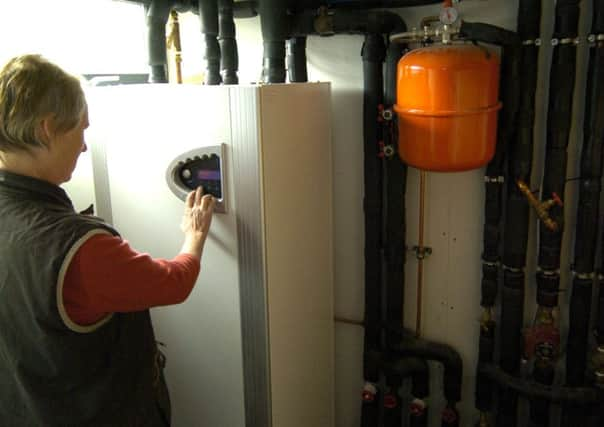Stephanie Clark: RHI tariff rates change not for the better


Eighty two per cent of people in the UK have never heard of district heating. Almost two-thirds have never heard of heat pumps. And more than a quarter have never heard of renewable heat at all. The Department of Energy & Climate Change’s (DECC) latest survey of 2,105 Britons, released last month (26 April), makes sobering reading for anyone involved in the renewable heat sector.
A day earlier, the same department closed its consultation into the future of the Renewable Heat Incentive (RHI). Reading the stark figures, it would be easy to wonder why they’re bothering. But decarbonising our heat sector is crucial. More than half the energy we use is in the form of heat. While keeping warm has always been important, doing so in a low-carbon, sustainable way has never been more so.
Advertisement
Hide AdAdvertisement
Hide AdThe heat pump sector alone already employs 3,100 people in Scotland. All that could start to unravel, however, if cuts and changes to the RHI are carried out in the way the UK government is currently proposing.
In 2011, with an eye on its target of sourcing 15 per cent of its energy from renewables by 2020, the UK government introduced the RHI. Described at the time as “the world’s first financial incentive of its kind to revolutionise the way heat is generated and used in buildings”, the scheme provided users of equipment like heat pumps, biomass boilers and solar thermal panels with a payment based on the amount of heat they produced.
Now, tariff rates and structures look set to change – with some sectors hit harder than others. Solar thermal, for example, could see itself out in the cold: DECC wants to remove it from the RHI altogether. The particular strengths of solar thermal include that it has negligible running costs, can be added to existing heating systems and its performance does not depend on investing in a highly-insulated house, making it particularly well suited to homes in fuel poverty.
It also works effectively in built-up urban areas and on smaller roofs, broadening the opportunities for homes to invest in renewables. To remove support for it now, when the stated aim of any changes is to ensure less-able-to-pay households can better benefit from the RHI, would be wrongheaded at best.
Another concern is the removal of tariff banding for biomass. While we agree that large-scale biomass has the potential to provide a significant contribution to our renewable heat targets, we do not believe that this should be at the expense of the small and medium-scale industry.
Previously, ‘banding’ in the tariffs for biomass meant that small, medium and large scheme each received differing levels of support. According to the consultation, the intention behind the proposal is to ‘incentivise deployment of large-scale biomass systems and process and district heating systems’. However, the problem here is twofold.
One: the proposed tariff would actually be too low to make large biomass installations workable. And two, the effective >50 per cent reduction in tariff that would result from removing the ‘medium biomass’ banding would damage a sector which is currently performing in line with expectations.
We have therefore highlighted, as part of our response to the RHI consultation, that our members feel there isn’t enough demand for larger boilers to fulfil the government’s ambitions in this area.
Advertisement
Hide AdAdvertisement
Hide AdIt is crucial that some of the proposals which are counterproductive and will have a significant, negative impact on the industry are addressed before any decision on the future of this key scheme are taken.
• Stephanie Clark is policy manager at Scottish Renewables